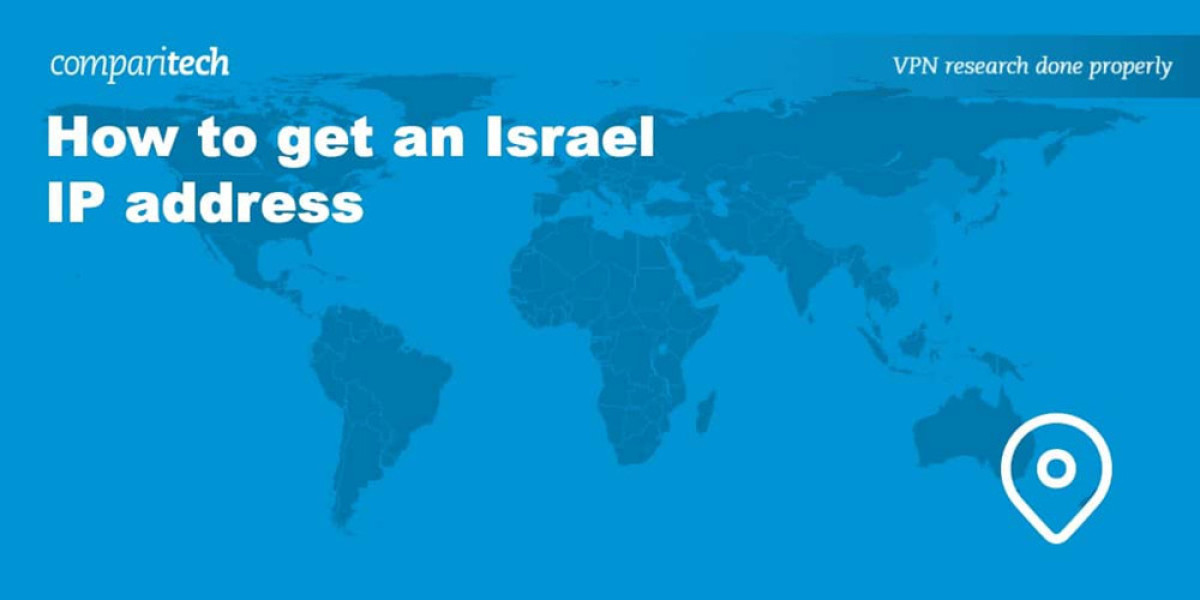Market Overview
Haemophilia is a genetic disorder that impairs the blood's ability to clot, leading to prolonged bleeding and easy bruising. There are two main types of haemophilia: Haemophilia A and Haemophilia B, with Haemophilia A being the most common. The global haemophilia treatment market is a dynamic sector within the healthcare industry, addressing the growing needs of patients suffering from this rare and often debilitating condition. Advances in medical research and treatment technologies have significantly improved patient outcomes, making treatment options more accessible and effective.
The haemophilia treatment market plays a pivotal role in offering therapies that can alleviate symptoms, reduce the frequency of bleeding episodes, and improve the quality of life for affected individuals. With advancements in recombinant technology and gene therapy, the haemophilia market continues to evolve, offering innovative treatment solutions. The market is driven by factors such as rising awareness about haemophilia, improved healthcare facilities, government initiatives, and the increasing prevalence of the disease.
Market Size and Share
The global haemophilia treatment market was valued at approximately USD 14.84 billion in 2024. The market is expected to grow at a Compound Annual Growth Rate (CAGR) of 7.5% during the forecast period from 2025 to 2034, reaching a projected value of USD 28.44 billion by 2034. This growth is attributed to the rising prevalence of haemophilia worldwide, increasing awareness about the disease, and ongoing advancements in treatment options.
Key contributors to market growth include the development of innovative therapies, increased research investments, and improvements in healthcare infrastructure, particularly in emerging markets. The rising awareness among healthcare providers and patients regarding new treatment modalities is expected to further drive the adoption of advanced therapies in the coming years.
Market Trends
- Advancements in Gene Therapy: Gene therapy is revolutionizing haemophilia treatment by offering the potential for long-term or even permanent solutions. Recent developments in gene editing technologies, such as CRISPR, have paved the way for targeted therapies that can address the underlying genetic causes of haemophilia, reducing the need for lifelong treatment. These advancements are expected to gain momentum, transforming the landscape of haemophilia care.
- Shift Towards Recombinant Coagulation Factors: Recombinant coagulation factor concentrates have gained significant traction as the preferred treatment for haemophilia. These products are produced without using human plasma, reducing the risk of viral contamination and offering a safer and more reliable alternative to traditional plasma-derived therapies. As safety concerns and product efficacy continue to improve, the demand for recombinant factor concentrates is expected to grow significantly.
- Increasing Adoption of Home-based Treatment Models: With the advancements in treatment technologies and increased patient education, home-based treatments have become a popular option for many haemophilia patients. These treatments allow patients to self-administer coagulation factor concentrates at home, which enhances convenience, reduces hospital visits, and improves the overall quality of life. This trend is expected to continue, particularly in developed regions.
- Emerging Markets and Increased Healthcare Accessibility: The increasing healthcare accessibility in emerging markets, such as Latin America, Asia-Pacific, and Africa, is expected to drive the growth of the haemophilia treatment market. Governments in these regions are investing in healthcare infrastructure, improving the availability and affordability of haemophilia treatments. This will help bridge the gap in treatment availability and ensure that more patients have access to life-saving therapies.
Market Analysis
Scope of the Report
This report covers a comprehensive analysis of the global haemophilia treatment market, including market size, share, and growth projections. It examines key factors driving the market, such as increasing healthcare accessibility, technological advancements in treatment, and rising prevalence of haemophilia. The report also delves into segmentation analysis based on disease type, product type, therapy type, and regional distribution.
Historical and Forecast Trends
Historically, the haemophilia treatment market has witnessed steady growth, driven by the need for continuous management of bleeding episodes and technological advancements in recombinant therapies. In the coming years, forecast trends indicate rapid growth in the adoption of advanced therapies like gene therapy, particularly in developed countries. The market is also expected to expand in emerging regions as healthcare access improves.
Industry Drivers and Constraints
Key drivers of market growth include the growing number of haemophilia cases globally, technological advancements in treatment options, and increased government support for healthcare initiatives. However, market constraints include the high cost of therapies, particularly innovative treatments like gene therapy, and limited availability of specialized healthcare providers in some regions. Efforts to reduce treatment costs and improve healthcare accessibility will be crucial to overcoming these challenges.
Historical and Forecast Market Analysis by Segment
Diseases Type: The market is primarily driven by two major types of haemophilia – Haemophilia A and Haemophilia B. Haemophilia A accounts for the majority of cases, but the treatment options for Haemophilia B are also advancing with new therapies.
Product Type: Recombinant coagulation factor concentrates are the leading product type, followed by plasma-derived coagulation factor concentrates and desmopressin, which is used to treat mild cases of haemophilia.
Therapy Type: The market is segmented into replacement therapy, gene therapy, and immune tolerance induction therapy. Gene therapy is expected to emerge as a game-changer due to its potential for long-term treatment.
Treatment Channel: Public and private healthcare systems are the primary treatment channels, with private healthcare providing more specialized care in some regions.
Distribution Channel: The distribution of haemophilia treatments occurs through hospital pharmacies, retail pharmacies, online pharmacies, and other distribution channels.
Breakup by Diseases Type
Hemophilia A: The most common form of haemophilia, accounting for approximately 80% of all haemophilia cases globally. Treatment for Haemophilia A generally involves the use of recombinant factor VIII concentrates to replace the missing or deficient clotting factor.
Hemophilia B: Also known as Christmas disease, Haemophilia B is caused by a deficiency of clotting factor IX. This form of haemophilia accounts for about 20% of all cases and is treated with recombinant factor IX concentrates or plasma-derived products.
Hemophilia C: A rarer form of haemophilia that involves a deficiency of clotting factor XI. Haemophilia C is typically less severe than Haemophilia A or B and is often managed with plasma-derived clotting factor concentrates.
Breakup by Product Type
Recombinant Coagulation Factor Concentrates: These products are considered the gold standard for haemophilia treatment, offering a safer alternative to plasma-derived products. They are produced through recombinant DNA technology and do not carry the risk of viral transmission.
Plasma Derived Coagulation Factor Concentrates: Plasma-derived concentrates are derived from human plasma and are used for treating both Haemophilia A and B. They remain an important treatment option, particularly in resource-limited regions.
Desmopressin: Used primarily in mild forms of Haemophilia A, desmopressin works by stimulating the release of stored factor VIII in the body. It is administered through intravenous or nasal spray forms.
Antifibrinolytics Agents: These drugs are used to prevent the breakdown of clots in patients with haemophilia, often used in conjunction with other therapies to manage bleeding episodes.
Breakup by Therapy Type
Replacement Therapy: This is the most common form of treatment, where missing clotting factors are replaced through intravenous infusion. It is the standard of care for haemophilia.
Gene Therapy: Gene therapy is gaining traction as a potential long-term solution for haemophilia. By delivering a functional gene to the patient's cells, it can produce the necessary clotting factors and reduce or eliminate the need for ongoing treatments.
Immune Tolerance Induction Therapy: This therapy is used in patients who develop inhibitors to coagulation factors. It works by gradually desensitizing the immune system to the clotting factor.
Regional Insights
North America
North America is the largest market for haemophilia treatments due to the high prevalence of haemophilia, advanced healthcare infrastructure, and strong government initiatives to provide better access to treatment. The United States remains a key player in the development and adoption of novel therapies such as gene therapy.
Europe
Europe is expected to maintain steady growth in the haemophilia treatment market, driven by increased healthcare investments, better disease awareness, and the availability of advanced treatment options. The region has seen the introduction of several new products and therapies in the past few years, which is contributing to market expansion.
Asia Pacific
The Asia-Pacific region is expected to experience rapid growth in the haemophilia treatment market due to the increasing prevalence of haemophilia, expanding healthcare access, and rising awareness about treatment options. Countries like India and China are emerging as key players in the market.
Latin America
Latin America is witnessing increased adoption of haemophilia treatments due to improved healthcare infrastructure and rising government support. Access to advanced therapies, such as gene therapy, remains limited in certain regions, but the market is growing steadily.
Middle East and Africa
In the Middle East and Africa, there is a growing demand for haemophilia treatments due to the rising prevalence of genetic disorders and improving healthcare systems. However, access to modern therapies is still a challenge in certain parts of the region.
Market Growth
The haemophilia treatment market is growing at a rapid pace due to the increasing prevalence of the disease, especially in developing regions. Advances in gene therapy and recombinant products are expected to improve treatment outcomes and reduce the long-term cost burden. Increasing healthcare expenditure, better awareness, and government initiatives are further driving growth, creating opportunities for new therapies to enter the market.
Get a Free Sample Report with a Table of Contents
Recent Developments & Challenges
Gene Therapy Approvals: Gene therapies like Hemlibra and Valrox are set to transform the treatment landscape, offering the possibility of long-term or permanent treatment solutions for haemophilia.
Regulatory Challenges: As gene therapies become more common, regulatory frameworks will need to evolve to ensure that these new therapies meet safety and efficacy standards.
Cost Considerations: The high cost of innovative therapies, particularly gene therapy, is a significant barrier to access for many patients worldwide.
Global Access: Efforts to improve the accessibility of haemophilia treatments in low-income and middle-income countries will be crucial for expanding market growth.
Key Players
Novo Nordisk A/S
Novo Nordisk is a global leader in diabetes care and haemophilia treatment. They offer recombinant coagulation factor concentrates such as Novoeight and NovoThirteen. Novo Nordisk has been a significant player in the development of innovative treatments and is at the forefront of gene therapy research for haemophilia.
Pfizer Inc.
Pfizer is a major pharmaceutical company that produces a range of haemophilia treatments, including the popular BeneFix and Xyntha products. Pfizer continues to invest in haemophilia research and has made significant contributions to the development of therapies for both Haemophilia A and Haemophilia B.
Bayer AG
Bayer is another key player in the haemophilia treatment market. Their Kovaltry and Jivi products are recombinant factor concentrates that provide safe and effective treatment for haemophilia patients. Bayer has also been involved in gene therapy research.
Biogen Inc.
Biogen is a leader in neurological disorders and is expanding its reach in the haemophilia space with therapies like Eloctate and Alprolix, which offer longer-acting treatments for haemophilia. Biogen is also exploring gene therapy options for the treatment of haemophilia.
Other companies in the haemophilia treatment market include CSL Behring, Grifols SA, Octapharma AG, Kedrion S.p.A., Ferring Pharmaceuticals Inc., and F. Hoffmann-La Roche Ltd..
FAQs
What is haemophilia?
Haemophilia is a genetic disorder where the blood does not clot properly, leading to excessive bleeding and bruising. It occurs when there is a deficiency of clotting factors in the blood, most commonly Factor VIII (Haemophilia A) or Factor IX (Haemophilia B). It is often inherited and affects mostly males.
What are the treatment options for haemophilia?
Treatment for haemophilia mainly includes replacement therapy, where missing clotting factors are replaced through infusion. Other treatments include gene therapy, which aims to correct the underlying genetic defect, immune tolerance induction therapy, and antifibrinolytic agents.
How is gene therapy changing haemophilia treatment?
Gene therapy is one of the most promising developments in haemophilia treatment. It works by introducing a functional copy of the defective gene responsible for the condition, allowing the body to produce the missing clotting factor. This potentially offers a long-term or even permanent solution to the disorder, reducing or eliminating the need for regular infusions.
What is the market size for haemophilia treatments?
The global haemophilia treatment market was valued at USD 14.84 billion in 2024 and is expected to grow at a CAGR of 7.5% from 2025 to 2034, reaching a value of USD 28.44 billion by 2034. This growth is driven by the rising prevalence of haemophilia and advancements in treatment options.
What are the most common treatments for haemophilia A and B?
For Haemophilia A, recombinant factor VIII concentrates are typically used for treatment. For Haemophilia B, recombinant factor IX concentrates are used. Other therapies, such as gene therapy and immune tolerance induction therapy, are also gaining importance as potential treatment options.
Read Our Blogs
Top 6 Companies in the United States Dialysis Services Market
Trump's New Tariff Plans: Impact on Global Biopharma & Healthcare Industry








